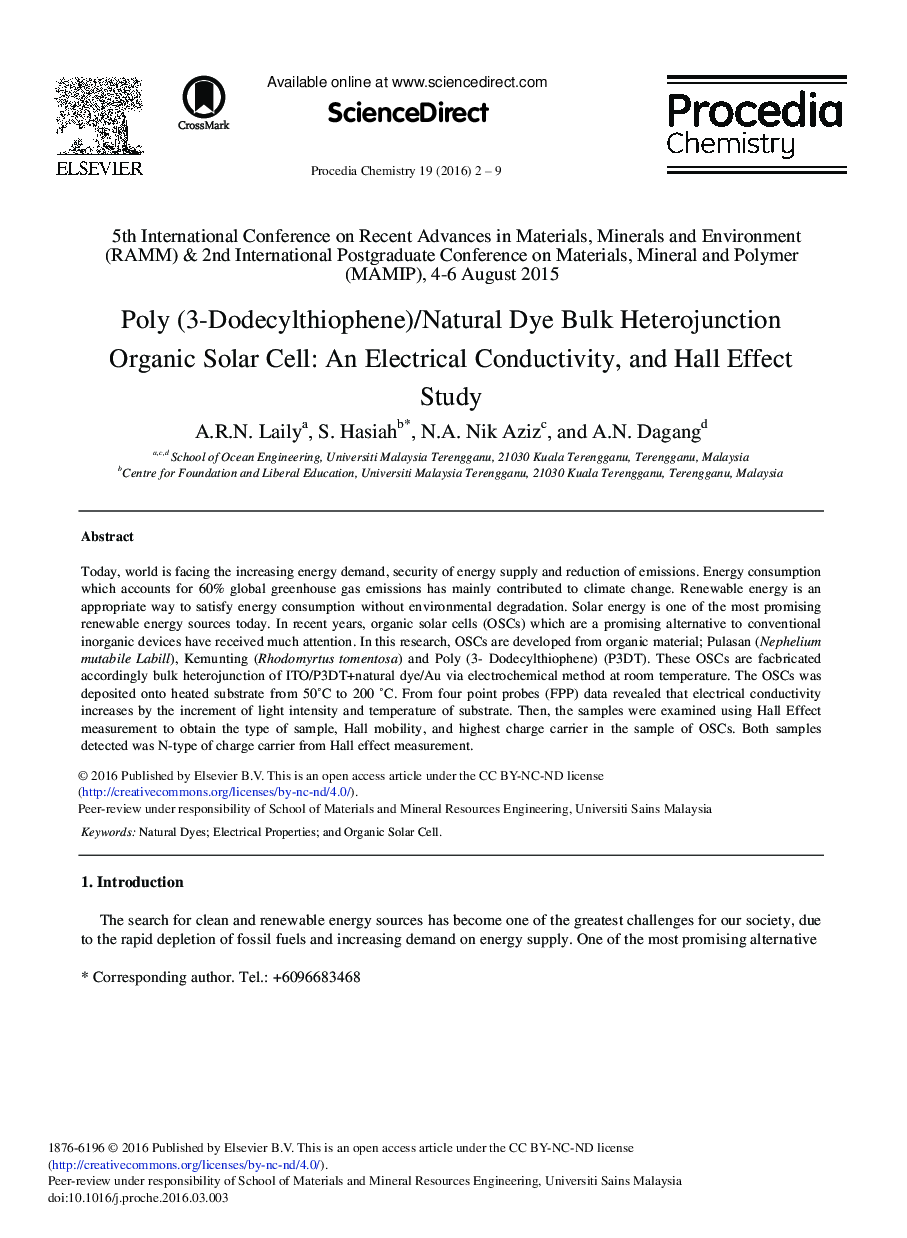| Article ID | Journal | Published Year | Pages | File Type |
|---|---|---|---|---|
| 239786 | Procedia Chemistry | 2016 | 8 Pages |
Today, world is facing the increasing energy demand, security of energy supply and reduction of emissions. Energy consumption which accounts for 60% global greenhouse gas emissions has mainly contributed to climate change. Renewable energy is an appropriate way to satisfy energy consumption without environmental degradation. Solar energy is one of the most promising renewable energy sources today. In recent years, organic solar cells (OSCs) which are a promising alternative to conventional inorganic devices have received much attention. In this research, OSCs are developed from organic material; Pulasan (Nephelium mutabile Labill), Kemunting (Rhodomyrtus tomentosa) and Poly (3- Dodecylthiophene) (P3DT). These OSCs are facbricated accordingly bulk heterojunction of ITO/P3DT+natural dye/Au via electrochemical method at room temperature. The OSCs was deposited onto heated substrate from 50 ̊C to 200 ̊C. From four point probes (FPP) data revealed that electrical conductivity increases by the increment of light intensity and temperature of substrate. Then, the samples were examined using Hall Effect measurement to obtain the type of sample, Hall mobility, and highest charge carrier in the sample of OSCs. Both samples detected was N-type of charge carrier from Hall effect measurement.
